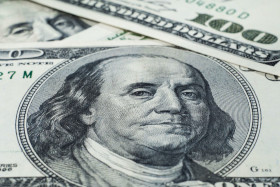The US dollar is trading downwards one day after the Federal Reserve left interest rates unchanged, but the central bank leaving the door open to a future rate cut should the data support a move might be driving down the dollar. The greenback declined more on the Philadelphia Federal Reserve Bank manufacturing survey, though its descent was capped by lower-than-expected jobless claims.
According to the Bureau of Labor Statistics (BLS), the number of Americans filing for unemployment benefits tumbled to 216,000 for the week ending June 15, down from the previous weekâs 222,000. This was lower than the median estimate of 220,000. The biggest declines were found in California (-1,996), Illinois (-1,639), and New York (-1,622), while the largest increases were situated in Pennsylvania (2,177) and Wisconsin (841).
On Thursday, the Philadelphia Fed Manufacturing Index cratered to 0.30 points in June, down from 16.6 points last month, which represents the lowest reading since February. This survey backed the Federal Reserveâs transition from hawk to dove, though the central bank still remains optimistic over the economy in 2019, 2020, and 2021.
Home sales and the purchasing managersâ index (PMI) are scheduled for release on Friday.
The next big trend in the foreign exchange market is a potential currency war. President Donald Trump has gone after China, accusing the worldâs second-largest economy if debasing the yuan to boost exports. Now, Trump is targeting the European Central Bank (ECB) after President Mario Draghi revealed that he was ready to cut interest rates and reignite another bond-buying round to spur growth. President Trump was not happy by the news, tweeting that Draghi âimmediately dropped the Euro against the Dollar, making it easier for them to compete against the USA. They have been getting away with this for years, along with China and others.â
President Trump has launched a trade war, so many analysts believe he could easily start a currency war as well. Such a war would entail central banks devaluing their respective currencies in a race to the bottom. With inflationary pressures subdued, there could be an international currency conflict.
The US Dollar Index plunged 0.47% to 96.66, from an opening 97.18.
The USD/CAD currency pair plummeted 0.64% to 1.3197, from an opening of 1.3281, at 17:46 GMT on Thursday. The EUR/USD advanced 0.60% to 1.1291, from an opening of 1.1227.
If you have any questions, comments, or opinions regarding the US Dollar, feel free to post them using the commentary form below.
US Dollar Hurt by Philly Fed Manufacturing Index, Buoyed by Jobless Claims
